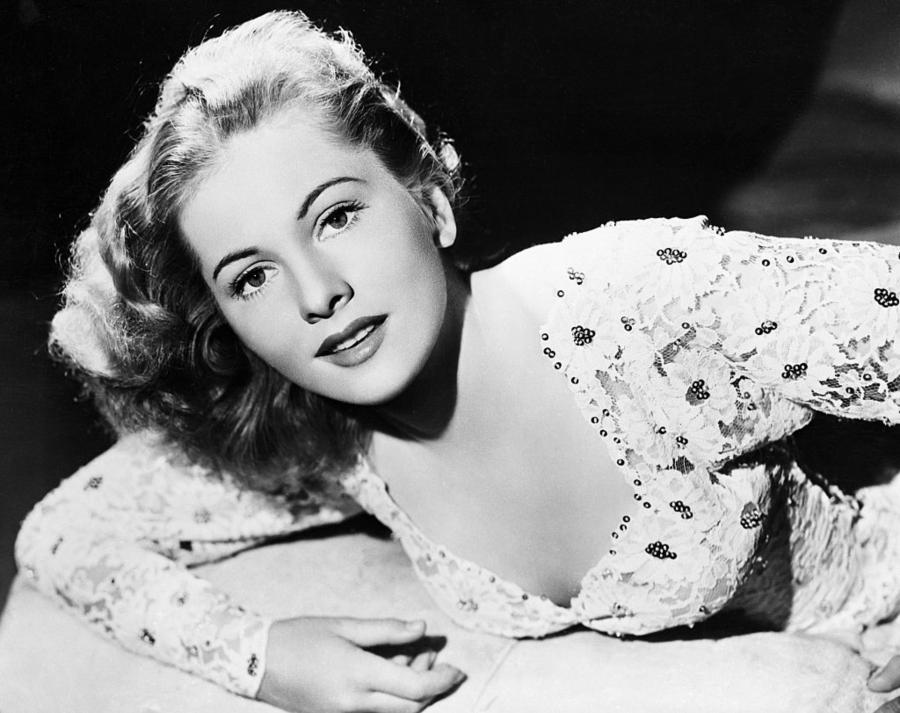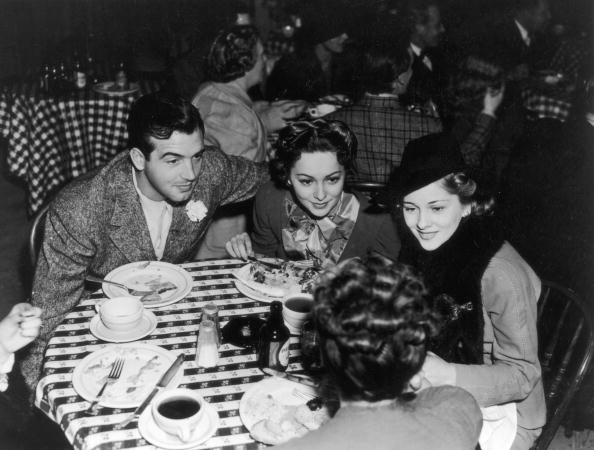What was Joan Fontaine’s Net Worth?
Joan Fontaine was a British-American actress who had a net worth of $40 million at the time of her death. Joan Fontaine died on December 15, 2013 at the age of 96.
Joan Fontaine won the Academy Award for Best Actress for her role as Lina in the 1941 Alfred Hitchcock film “Suspicion.” Her sister Olivia de Havilland was one of the nominees, for her work in the movie “Hold Back the Dawn.” To this day, Joan and Olivia are the only siblings to win lead acting Academy Awards. Olivia won two Best Actress Oscars, her first for 1946’s “To Each His Own” and the second for 1949’s “The Heiress”.
Joan and Olivia’s first cousin on their father’s side, Geoffrey de Havilland, founded the de Havilland aircraft company. Sir Geoffrey de Havilland was a British aircraft designer and engineer. He is best known for his work on the Mosquito, a twin-engined, multi-role combat aircraft that was used by the Royal Air Force during World War II. He also designed the De Havilland Comet, the world’s first jet airliner.
Joan Fontaine was among the most famous stars of Hollywood’s Golden Age. The younger sister of actress Olivia de Havilland, Joan starred in such films as “Gunga Din,” “Rebecca,” “The Constant Nymph,” “Letter from an Unknown Woman,” and “Suspicion,” the lattermost of which earned her the Academy Award for Best Actress. Fontaine continued to act until 1994, appearing in television films, television series, plays, and radio programs.
Early Life and Education
Joan Fontaine was born as Joan de Beauvoir de Havilland on October 22, 1917 in Tokyo City in what was then the Empire of Japan. Her parents were English; they were Lillian, a stage actress, and Walter, a professor at the Imperial University in Tokyo. Fontaine’s elder sister was actress Olivia de Havilland. The girls’ parents separated in 1919 before getting divorced in 1925. Fontaine and her sister later moved to the United States with their mother, where they settled in Saratoga, California. Nearby, Fontaine was educated at Los Gatos High School. At the age of 16, she returned to Japan to live with her father, and attended the Tokyo School for Foreign Children.
In 1925, their mother re-married a man named George Milan Fontaine. Hence, Joan Fontaine.
Film Career in the 1930s
Fontaine made her film debut in the 1935 MGM romantic comedy “No More Ladies,” starring Joan Crawford and Robert Montgomery. She was credited as Joan Burfield. Fontaine went on to star opposite Bruce Bennett in the 1937 independent film “A Million to One.” That same year, she signed a contract with RKO Pictures and had her first major starring role in the aviation film “The Man Who Found Himself,” with John Beal. Fontaine appeared in a few other RKO films in 1937, including “You Can’t Beat Love,” “Music for Madame,” and “A Damsel in Distress,” costarring Fred Astaire. In 1938, Fontaine starred in the RKO comedies “Maid’s Night Out,” “Blond Cheat,” and “Sky Giant,” and also starred in the independent picture “The Duke of West Point.” Returning to RKO in 1939, Fontaine appeared in the adventure film “Gunga Din.” Also that year, she had small parts in “Man of Conquest” and “The Women.”

Joan Fontaine in 1941 (via Getty)
Film Career in the 1940s
Fontaine began the 1940s with one of her most famous roles, playing the second Mrs. de Winter in Alfred Hitchcock’s adaptation of Daphne du Maurier’s novel “Rebecca.” For her performance, she received her first Academy Award nomination for Best Actress, while the film itself won Best Picture. Fontaine reunited with Hitchcock the next year for “Suspicion,” in which she starred as a woman who suspects her new husband is trying to kill her. This time, Fontaine won the Academy Award for Best Actress. She subsequently starred opposite Tyrone Power in the 1942 romance “This Above All.” The following year, Fontaine starred in another romantic drama, “The Constant Nymph,” for which she earned her third Academy Award nomination. She also starred as the titular character in Robert Stevenson’s adaptation of “Jane Eyre.” In 1944, Fontaine starred in the adventure film “Frenchman’s Creek,” her second film based on a Daphne du Maurier novel.
In 1945, Fontaine starred as the titular character in “The Affairs of Susan.” Following that, she starred in John Berry’s drama “From This Day Forward” and Sam Wood’s crime drama “Ivy,” the latter of which was the first film to be produced by her new company Rampart Productions. Fontaine went on to have a big year in 1948, starring in four films: Max Ophüls’s “Letter from an Unknown Woman,” Billy Wilder’s “The Emperor Waltz,” the romantic comedy “You Gotta Stay Happy,” and the noir “Kiss the Blood Off My Hands.”
Further Film Career
In 1950, Fontaine starred in William Dieterle’s romantic drama “September Affair” and Nicholas Ray’s noir “Born to Be Bad.” The next year, she starred in Mitchell Leisen’s period comedy “Darling, How Could You!” In 1952, Fontaine starred opposite Ray Milland in George Stevens’s “Something to Live For,” and also starred as love interest Rowena in the historical adventure epic “Ivanhoe.” She subsequently starred in “Decameron Nights,” “Flight to Tangier,” and “The Bigamist,” all from 1953. The year after that, Fontaine starred opposite Bob Hope in “Casanova’s Big Night.” She went on to appear in Anthony Mann’s “Serenade” and Fritz Lang’s “Beyond a Reasonable Doubt” in 1956. Fontaine’s final films of the decade were “Island in the Sun,” “Until They Sail,” and “A Certain Smile.” She appeared in fewer films in the 1960s as she gravitated toward television, theater, and radio. Early in the decade, she starred in the hit science-fiction film “Voyage to the Bottom of the Sea.” Fontaine’s only other film credits in the 1960s were Henry King’s “Tender is the Night” and the British horror film “The Witches.”

Getty
Television Career
Fontaine began appearing on television in the 1950s. She appeared in episodes of various anthology series, including “Four Star Playhouse,” “The 20th Century Fox Hour,” and “General Electric Theater.” In the 1960s, Fontaine showed up in episodes of “Checkmate,” “The Dick Powell Show,” “Wagon Train,” “The Alfred Hitchcock Hour,” and “The Bing Crosby Show,” among other programs. After a long break, she returned in 1975 to appear in an episode of “Cannon” that was written specifically for her. Three years after that, Fontaine had a supporting role in the television film “The Users.” In 1980, she earned a Daytime Emmy Award nomination for her guest role on the soap opera “Ryan’s Hope.” Over the subsequent years, she appeared in episodes of “Aloha Paradise,” “The Love Boat,” “Bare Essence,” and “Hotel,” and in 1986 starred in the television film “Dark Mansions” and the miniseries “Crossings.” Fontaine made her final appearance on screen in the 1994 television film “Good King Wenceslas.”
Stage Career
Fontaine made her stage debut in the West Coast production of “Call it a Day” in 1935. Later, in 1954, she made her Broadway debut in “Tea and Sympathy.” Fontaine returned to Broadway a decade later to appear in “A Severed Head.” In 1967, she acted in a production of “Dial M for Murder” in Chicago, and the following year starred on Broadway in “Forty Carats.” Fontaine continued to act on stage in the 1970s; she also toured reading poetry.
Sibling Rivalry
Beyond the screen, Fontaine was well-known for her sibling rivalry with her sister Olivia de Havilland. Much of the tension between them arose from Fontaine’s reported belief that her sister was their mother’s favorite child. Both women were nominated for Academy Awards in 1941, with Fontaine beating her sister to the prize; however, de Havilland would go on to win two trophies herself before the decade was over.
Personal Life and Death
Fontaine married and divorced four times. Her first husband was actor Brian Aherne, to whom she was wed from 1939 to 1945. After that, she married actor and producer William Dozier, with whom she had a daughter named Deborah before separating in 1949 and divorcing in early 1951. Fontaine subsequently wed writer and producer Collier Young in 1952; they separated in 1960 and divorced early the following year. Her fourth and final husband was Sports Illustrated golf editor Alfred Wright Jr., to whom she was married from 1964 to 1969. Beyond her marriages, Fontaine had romantic relationships with politician Adlai Stevenson and actor and producer John Houseman. In 1951, Fontaine informally adopted a Peruvian girl named Martita while in South America for a film festival.
On December 15, 2013, Fontaine passed away in her sleep at her home in Carmel Highlands, California. She was 96 years of age.
Read More: World News | Entertainment News | Celeb News
R






